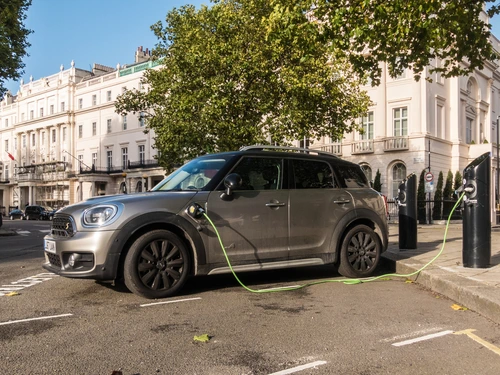
As the UK aims to become carbon-neutral by 2050, the focus on reducing carbon emissions has shifted towards vehicles, particularly those powered by internal combustion engines (ICE).

With the ban on ICE vehicle sales set for 2030, a recent study conducted by DriveElectric investigated the cost disparity between running ICE vehicles and electric vehicles (EVs) in various regions of the UK. The study also explored public sentiments towards ultra-low emission zones (ULEZs) and clean air zones.
Expensive areas for petrol vehicles vs EVs: Dumfriesshire tops the list
Dumfriesshire emerges as the costliest area in the UK to run a petrol car, with an average petrol price of £1.64 per litre at the time of the report. Based on calculations per 100 miles, it costs £11.47 to fuel a petrol car, which is 17.69% higher than running an EV Additionally, running a petrol van in Dumfriesshire is 69.01% more expensive compared with an electric van.
Oxfordshire and Berkshire secure the second and third positions, respectively, as the most expensive areas for driving ICE vehicles. In Oxfordshire, it costs £1.53 per litre for petrol, resulting in an 11.68% higher cost to run a petrol car compared with an EV. Similarly, Berkshire has an average petrol price of £1.52 per litre, making running a petrol car 11.15% more expensive than its electric counterpart.
Expensive areas for diesel vehicles vs EVs
Dumfriesshire dominates again, maintaining its position as the most expensive region for driving a diesel car, costing £12.60 per 100 miles, which is 25.07% higher than running an EV. Diesel van usage in Dumfriesshire is also 69.42% more expensive compared with electric vans.
North Lincolnshire and Bedfordshire follow closely as the second and third most expensive areas for running diesel vehicles. Both regions exhibit significant cost differences of over 22% for diesel cars and approximately 69% for diesel vans when compared with their electric counterparts.
London’s expensive boroughs for petrol vehicles vs EVs: Westminster takes the lead
Westminster emerges as the costliest London borough for running petrol vehicles. With petrol prices around £1.73 per litre at the time of the report, petrol cars in Westminster cost 21.97% more per 100 miles than their electric counterparts. Additionally, petrol vans in Westminster are 70.63% more expensive to run compared to electric vans.
Wandsworth and Waltham Forest rank second and third, respectively, among the most expensive London boroughs for petrol vehicles. In Wandsworth, petrol cars cost 18.67% more than electric cars, while petrol vans cost 69.39% more than electric vans. Similarly, in Waltham Forest, running a petrol car is 17.18% more expensive than running an electric car, and petrol vans cost 68.82% more than electric vans.
Public sentiments on ULEZs: mixed opinions
Elsewhere, DriveElectric’s survey uncovers diverse public sentiments regarding ULEZs in the UK. While 36% of respondents support ULEZs in areas with significant air pollution, 26% express resistance, largely due to financial constraints. The age group of 18–24 demonstrates the highest support (43%) for ULEZs, with those aged 65 and older showing the highest opposition (21%).
Public opinions on ULEZs show a mix of support and resistance, with varying sentiments across age groups. Understanding the cost differences and public sentiments can help inform policy decisions and drive the adoption of electric vehicles as the UK progresses towards its carbon-neutral goals.
Clean air zones in the UK: current and planned zones
The UK currently has six active clean air zones in Bath, Birmingham, Bradford, Bristol, Newcastle and Portsmouth. London's Ultra-Low Emission Zone (ULEZ) acts as an additional clean air zone. However, plans for zones in Manchester, Leeds and Leicester were abandoned in favour of alternative measures such as improving filters in high-polluting vehicles and adopting greener fuels.
[Read more: Are low-traffic neighbourhoods really working?]






